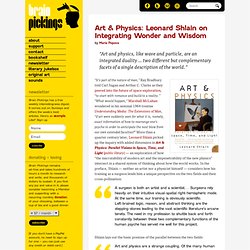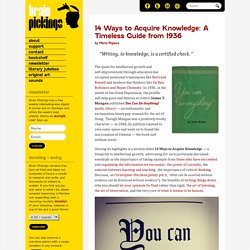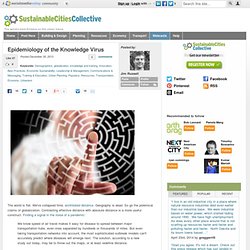

Mary Oliver on the Mystery of the Human Psyche, the Secret of Great Poetry, and How Rhythm Makes Us Come Alive. By Maria Popova “Rhythm is one of the most powerful of pleasures, and when we feel a pleasurable rhythm we hope it will continue.

When it does, it grows sweeter.” “Poetry makes possible the deepest kind of personal possession of the world,” James Dickey wrote. “The way to develop good taste in literature,” Joseph Brodsky advised, “is to read poetry.” Wordsworth believed the poetic form to be “the breath and finer spirit of all knowledge.” Mary Oliver (b. 1935, right) with her partner of over forty years, photographer Molly Malone Cook (1925–2005) at the couple's home in Provincetown, Massachusetts Oliver considers the intricate courtship between poetry and the soul: Mary Oliver in 1964 (photograph by Molly Malone Cook) She goes on to explore the spellbinding power of rhythm: The reader, as he or she begins to read, quickly enters the rhythmic pattern of a poem.
Lines of good poetry are apt to be a little irregular. Art & Physics: Leonard Shlain on Integrating Wonder and Wisdom. By Maria Popova “Art and physics, like wave and particle, are an integrated duality … two different but complementary facets of a single description of the world.”

“It’s part of the nature of man,” Ray Bradbury told Carl Sagan and Arthur C. Clarke as they peered into the future of space exploration, “to start with romance and build to a reality.” “What would happen,” Marshall McLuhan wondered in his seminal 1964 treatise Understanding Media: The Extensions of Man, “if art were suddenly seen for what it is, namely, exact information of how to rearrange one’s psyche in order to anticipate the next blow from our own extended faculties?”
More than a quarter century later, Leonard Shlain picked up the inquiry with added dimension in Art & Physics: Parallel Visions in Space, Time, and Light (public library) — an exploration of how “the inscrutability of modern art and the impenetrability of the new physics” intersect in a shared system of thinking about how the world works.
Donating = Loving. Barry Schwartz: Our loss of wisdom. Pioneering Psychologist Jerome Bruner on Art as a Mode of Knowing and Its Four Psychological Aspects. By Maria Popova “Whoever reflects recognizes that there are empty and lonely spaces between one’s experiences.”

The question of what art is has been asked and answered at least since we dwelled in caves. Every era has produced a crop of memorable answers from its greatest minds. Oscar Wilde pointed to the “temperament of receptivity” as the secret of art, Leo Tolstoy championed its “emotional infectiousness,” Susan Sontag saw it as “a form of consciousness,” and Alain de Botton considers it therapy of the soul. But one of the most insightful and dimensional explorations of the function of art in human culture comes from legendary Harvard psychologist Jerome Bruner (b.
Bruner begins with connectedness, which thrives on our sense of “unfilled possibilities for experience”: Whoever reflects recognizes that there are empty and lonely spaces between one’s experiences. 14 Ways to Acquire Knowledge: A Timeless Guide from 1936. Consider the knowledge you already have — the things you really know you can do.

They are the things you have done over and over; practiced them so often that they became second nature. Every normal person knows how to walk and talk. But he could never have acquired this knowledge without practice. For the young child can’t do the things that are easy to older people without first doing them over and over and over. Most of us quit on the first or second attempt. Any normal child, at about the age of three or four, reaches the asking period, the time when that quickly developing brain is most eager for knowledge. Those first bitter refusals to our honest questions of childhood all too often squelch our “Asking faculty.” Every person possessing knowledge is more than willing to communicate what he knows to any serious, sincere person who asks. Ask! You never learn much until you really want to learn. If you don’t desire to learn you’re either a num-skull [sic] or a “know-it-all.” Write! Knowledge and Demographics.
The world is flat.

We've collapsed time, annihilated distance. Geography is dead. So go the polemical claims of globalization. Contrasting effective distance with absolute distance is a more useful construct. The Difference Between Knowledge and Experience. Which of the 8 kinds of intelligence do you have? Along with youth, beauty and wealth, our culture places a high premium on intelligence, which is generally seen as a fairly concrete trait.

People are smart or they’re not, and psychologists and educators have a slew of standardized tests with which to gauge a person’s intellect. The terms IQ, general intelligence, general cognitive ability and general mental ability are all used to refer to what cognitive tests measure — which is primarily an evaluation of mathematical skill, verbal fluency and spatial visualization. But what about a musical genius who does poorly with spelling or a brilliant linguist who has a hard time with fractions? How does the standard idea of “general intelligence” account for those with obvious gifts, but who may not score well across the board on standardized tests? The general intelligence model is defined by a relatively narrow spectrum of skills, which seems really limiting when you think about it. This is where Dr. 1. 2. 3. 4. 5. 6. 7. 8.